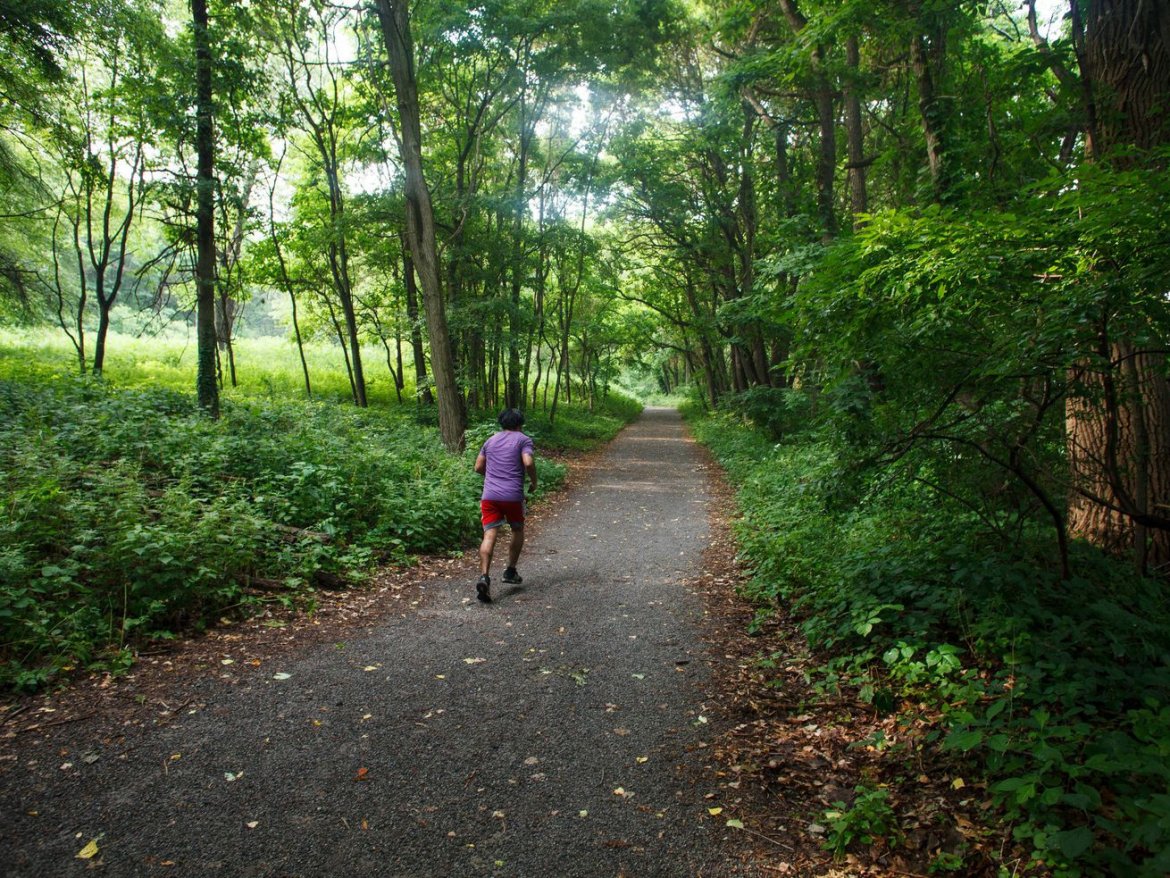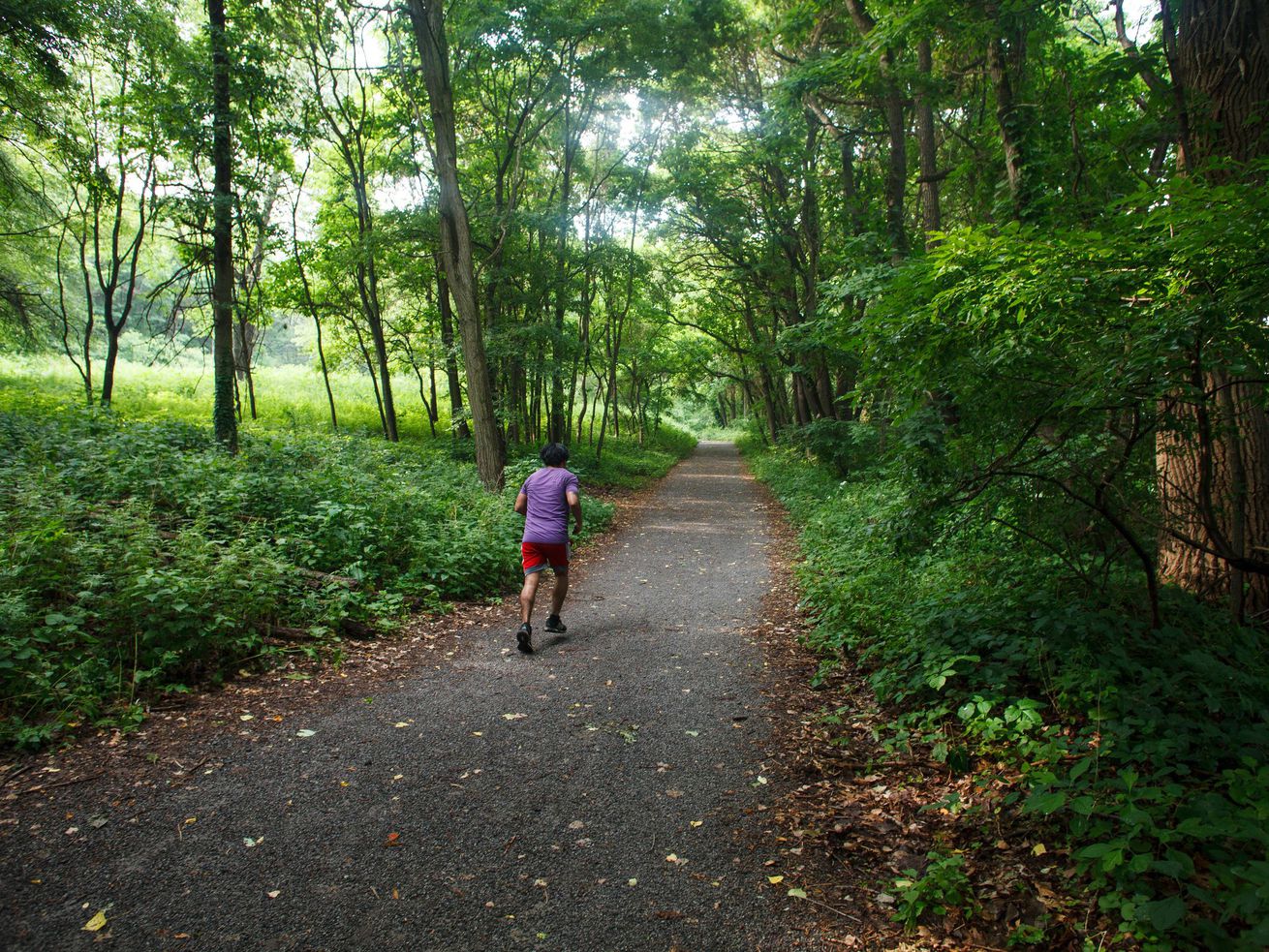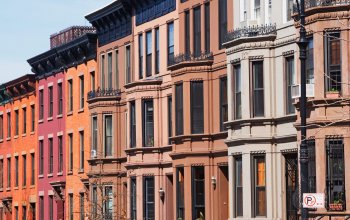
A Non-Obvious Outdoor Guide to New York

 Van Cortlandt Park in the Bronx, New York City’s third-largest park at over 1,000 acres, has attracted runners with it cross-country trails for more than a century. | Jonathan Elderfield/AP/Shutterstock
Van Cortlandt Park in the Bronx, New York City’s third-largest park at over 1,000 acres, has attracted runners with it cross-country trails for more than a century. | Jonathan Elderfield/AP/Shutterstock
From foraging to beekeeping.
This summer, the city’s more familiar outdoor spaces — Prospect Park, the Hudson River Greenway — are particularly crowded. Fortunately, there are plenty of lesser-known spots and activities readily available — whether you’re looking for a reprieve from your cramped apartment or trying to pick up a new hobby. Below, are 12 outdoor-centric suggestions, from how to begin beekeeping on your own balcony to a foraging tour in Kew Gardens.
Watch Toggenburg Goats Graze in Queens
The Queens County Farm Museum, which spans 47 acres in Glen Oaks, is the longest continuously farmed site in the state, dating back to 1697. New Yorkers can visit year-round, seven days a week to see how the farm operates and to see it’s animals (two Dexter steers, the smallest cattle breeds in the world at 900 pounds, sheep, two heritage breed pigs, laying hens, Italian honeybees, and a mix of Nubian, Toggenburg, Lamancha, and — as of 2016 — Saanen goats). In the fall, there’s a pick-your-own pumpkin patch, and a corn maze that’s shaped like the Unisphere.
Traverse an Urban Old-Growth Forest
Along the Bronx river, to the East of the Tulip Tree Alee in the New York Botanical Garden, is the Thain Family Forest, the largest section of old-growth forest — woodland that has remained untouched for centuries — in the city. The exact age of the forest’s towering oak and hickory trees is unclear, but the 50-acre expanse predates the Dutch settlement of New York City and looks much the same as it did hundreds of years ago. Visitors can walk paths that follow the original hunting trails of the Lenape Native Americans and see marks carved by glaciers thousands of years ago.
Wander the Roof of the Javits Center
On the convention center’s 6.75-acre green roof, visitors may see up to 29 different species of birds (in the past: Canada geese, American Kestrels, herring gulls, great black-backed gulls, mourning doves, and northern mockingbirds, among others), three honeybee hives, and five different bat species. The space also helps reduce energy consumption in the convention center by regulating roof temperatures. Free tours are available by appointment only.
Forage For Black Cherries in Forest Park
Garlic mustard, wild parsnips, and other plants safe for consumption are all commonly found in the five boroughs, but it’s challenging to find them if you don’t know how. “Wildman” Steve Brill, has led New Yorkers on foraging excursions for more than 30 years, and still does. At Forest Park near Kew Gardens during late summer, for instance, Brill will guide you to lawns packed with spicy-hedge mustard and bushes loaded with elderberries and black cherries; check out his roster of tours for more options.
Become a Beekeeper
It’s perfectly legal in New York City to keep honeybees, whether as a hobby or a profession, so long as you register your hive with the city. If you have a roomy balcony, rooftop, or garden, the New York City Beekeepers Association can help connect you with a hive through their Host a Hive program.
Plant Flowers in Fort Tryon Park
Peruse the NYC Parks Department’s volunteer opportunities in each borough — volunteers can help with everything from pruning trees and picking up trash, to planting flowers and plucking invasive weeds.
Bike in the Bronx
If you’ve mastered our favorite beginner bike rides around New York City, there are plenty of moderately difficult trails for more ambitious cyclists, such as in High Bridge Park. The mountain-bike trail will put you on a winding path through dense woodland in Washington Heights that feels far removed from the five boroughs. On the ten-mile park trail loop in Van Cortlandt Park in the North Bronx, you’ll cruise past two lakes and miles of lush greenery. For something that’s still slightly easy, we suggest a ride to Randall’s Island, which has miles of car-free pathways and easy access to the city via the Randall’s Island connector to the South Bronx.
Canoe Through the Gowanus Canal
The Gowanus Dredgers lend out three-person boats (which are cleaned between each use) for free on most Wednesdays from 6–8 p.m. and Saturdays from 1–5 p.m. so that guests can explore the estuary at their own speed on a half-hour (self-guided) paddle. Discover the canal’s gritty waterway infrastructure, and get an inside look at the storied canal — which is named for Gouwane, a Lenape chief — and the variety of industrial buildings that dot its banks.
Cross the City’s Oldest Standing Bridge
The High Bridge, which was built in 1848, connects Washington Heights in Manhattan and Highbridge in the Bronx, and has views of the Harlem River and the High Bridge Water Tower (the design of which blends Romanesque-Revival and neo-Grec architectural styles). It’s located above an original Croton Aqueduct pipe, which used to carry water from the Croton River in Westchester to Manhattan.
Spot a Hooded Merganser in Green-Wood Cemetery
New York City is a major stop for birds migrating on the Atlantic Flyway. There are plenty of spots across the city to watch this procession, including big parks (Central, Prospect) and lesser-known spots (Alley Pond Park, North Mount Loretto State Forest, and Green-Wood Cemetery), whose ponds attract pied-billed grebes, green-winged teals, hooded mergansers, and American coots.
Or Nurse Wounded Birds Back to Health
Volunteer to help rehabilitate and release birds at the Wild Bird Fund, where New Yorkers bring more than 5,000 birds each year for care. Many of the birds are injured by mistakenly flying into buildings along their migratory flights. Volunteers help with the feeding and housing needs of various birds — from pigeons to red-tailed hawks — and then, once they have recovered, let them loose in city parks.
Visit a Naval Cemetery Turned Walkway
The popular parks and spots — Prospect Park, Herbert Von King, and Central Park’s Ramble — are particularly overrun this summer. There are several hidden parks and gardens that are significantly less crowded, including the secluded Naval Cemetery Landscape at the Brooklyn Navy Yard (which reopened in 2016 with new walkways and plantings after being closed to the public for a century), or the Heather Garden, a sloping three-acre piece of Fort Tryon Park with one of the largest collections of heath and heather on the East Coast.
Love where you live
Be Heard at Go Home NY
Be heard! Leave your apartment, condo, and coop building reviews at Go Home NY! Know a building's managers are awful? Have the inside line on a perfect building? Anything in between? Express your voice and be heard. Leave a review at Go Home NY.


